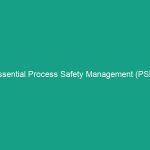Good Morning Team!
Today, we’re going to discuss a crucial topic that impacts all of us: Must-Know Social Distancing Guidelines to Ensure Workplace Safety. As we navigate through these challenging times, understanding and adhering to these guidelines is vital for our health and Safety. Let’s dive into why these practices are essential and how each of us can contribute to a safer workplace.
Understanding Social Distancing
Social distancing refers to maintaining a physical space between individuals to prevent the spread of illness, particularly respiratory viruses. In the context of Workplace Safety, it’s about keeping a safe distance—typically 6 feet—from others to reduce the risk of transmission. This practice has become a cornerstone of our Safety protocols, especially during health crises.
Many might think that social distancing only applies to certain situations or is only necessary during a health crisis. However, it’s a proactive measure that can be beneficial in various scenarios, including seasonal flu outbreaks or other contagious illnesses.
Key Hazards, Risks, and Safety Considerations
Ignoring social distancing guidelines can lead to significant health risks, including:
- Increased transmission rates: Close contact can facilitate the rapid spread of viruses among employees.
- Workplace outbreaks: An outbreak can result in severe absenteeism, affecting productivity and morale.
- Legal and compliance issues: Failing to adhere to Regulations can lead to fines and legal consequences for the company.
Real-world examples have shown that workplaces that do not enforce social distancing effectively face higher rates of infection and subsequent operational disruptions. We must remain vigilant to protect ourselves and our colleagues.
Best Practices, Procedures, & Actionable Advice
To ensure Workplace Safety, here are several Best Practices and Procedures we must follow:
1. Maintain Distance
Always aim to keep at least 6 feet between yourself and others in the workplace. This applies to meeting rooms, break areas, and even hallways.
2. Use Visual Aids
Employ visual markers such as floor stickers, signs, and barriers to remind everyone about maintaining distance. These will serve as constant reminders, helping us adhere to guidelines.
3. Limit Gatherings
Restrict the number of people in meetings or common areas. Whenever possible, opt for virtual meetings or small groups spread out to ensure compliance with distancing measures.
4. Promote Hygiene Practices
Encourage frequent handwashing, use of hand sanitizers, and wearing masks where social distancing cannot be maintained. This will significantly reduce the risk of transmission.
5. Implement Staggered Shifts
If feasible, consider staggered work shifts to reduce the number of employees present at one time. This will help maintain social distancing Standards during peak hours.
6. Stay Informed and Flexible
Stay updated on any changes to social distancing guidelines from local health authorities and be ready to adapt our practices as necessary.
Real-World Example
In a manufacturing plant that implemented strict social distancing protocols, a study found that they were able to reduce infection rates by over 80% compared to those who did not follow guidelines. This highlights the effectiveness of these practices in safeguarding our health.
Regulations, Standards, and Compliance
It is crucial to adhere to both federal and local regulations regarding Workplace Safety. In the United States, OSHA has specific guidelines for maintaining a safe working Environment during health crises, including:
- Providing Personal Protective Equipment (PPE) as needed.
- Ensuring proper ventilation in indoor spaces.
- Establishing policies that promote social distancing.
Compliance not only protects you but also contributes to a safer workplace culture. Remember, it’s everyone’s responsibility to uphold these standards.
Employee Engagement & Discussion
Now, I want to hear from you. What challenges have you faced in maintaining social distancing while at work? Are there any suggestions you have that could help us improve our practices? Your feedback is invaluable in ensuring we create the safest possible environment for everyone.
Conclusion & Key Takeaways
In conclusion, understanding and applying social distancing guidelines is crucial for ensuring Workplace Safety. Remember the key points:
- Maintain a safe distance of at least 6 feet.
- Utilize visual aids to promote distancing.
- Limit gatherings and promote hygiene practices.
- Stay informed about changing regulations.
By prioritizing these practices, we can contribute to a safer workplace for ourselves and our colleagues. Thank you all for your attention and commitment to safety. Let’s continue to work together to keep our workplace healthy and secure!


